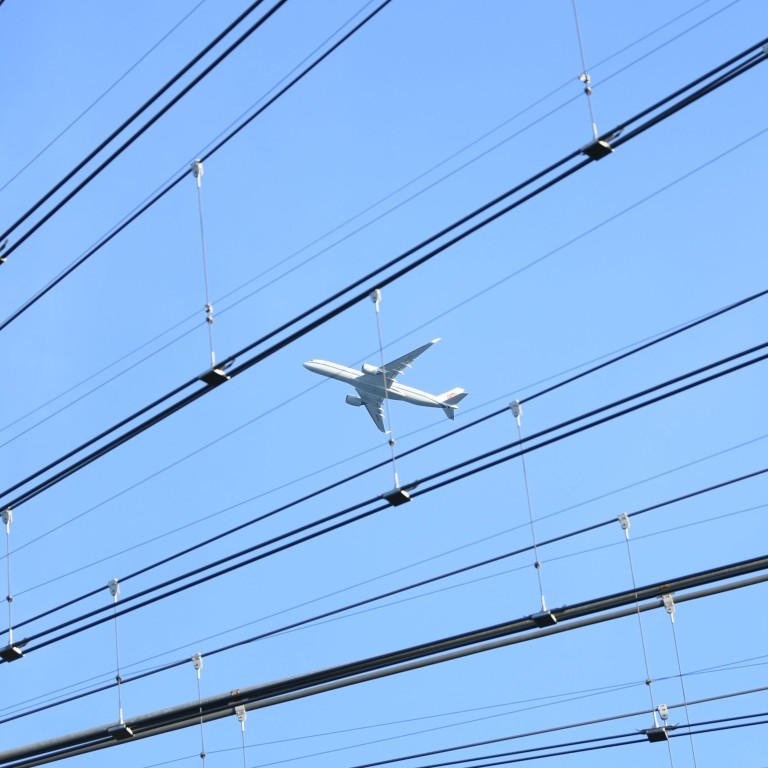
What to expect when the coronavirus-hit world starts flying again
- UN agency recommends health guidelines for airlines in the pandemic era
- Changes among most significant since aftermath of September 11 attacks
Flying will not be the same when more planes take to the air: passengers will be required to wear masks, moving around the cabin will be discouraged, and don’t expect food and drink service on some flights.
The International Civil Aviation Organisation (ICAO) has recommended new health protocols for the hard-hit aviation industry as it relaunches global air travel in the coronavirus pandemic era.
The recommendations were among the most significant since air travel security was tightened in the wake of the September 11 terror attacks. They were drawn up with the World Health Organisation (WHO) and the International Air Transport Association (IATA).
“These guidelines will facilitate convergence, mutual recognition and harmonisation of aviation Covid-19 related measures across the globe,” Philippe Bertoux, who led the ICAO air travel task force said. “They are intended to support the restart and recovery of global air travel in a safe, secure and sustainable way.”
The health recommendations would affect every stage of the air travel process, and are largely designed to limit contact between passengers, airport staff and cabin crew.
On their arrival at airports, travellers should present a health certificate and undergo an initial temperature check, under the guidelines.
Online check-in before arriving at the airport should be given priority, and passages through security should be rethought to limit physical contact and waiting in queues.
Asia’s aviation sector divided over which safety measures to use
Mobile tickets were advised, as well as other forms of no-contact technology, such as facial or eye scans.
“This will eliminate or greatly reduce the need for contact with travel documents between staff and passengers,” the protocol said.
Passengers were encouraged to travel as light as possible, with just one small piece of hand luggage. Newspapers and magazines would no longer be allowed on board, and duty-free sales would be limited.

03:51
Tracking the massive impact of the Covid-19 pandemic on the world’s airline industry in early 2020
The wearing of a mask or face covering should be obligatory inside aircraft and terminals, where physical distancing of at least one metre should be respected
Flight attendants would be provided with personal protective equipment that could include visors, gloves and medical masks.
Airport Authority Hong Kong (AAHK), which runs Hong Kong International Airport (HKIA), has asked airlines to follow “the best practices and advisories of international organisations”.
Hong Kong reveals HK$1 billion package to help aviation industry through crisis
HKIA relaunched transit travel on June 1, after a two-month suspension.
IATA director general and CEO Alexandre de Juniac said airlines strongly supported the new recommendations.
“We are counting on governments to implement the recommendations quickly, because the world wants to travel again and needs airlines to play a key role in the economic recovery.”

Airlines had already implemented some protective measures ahead of ICAO’s formal recommendations, which were adopted by the UN body’s executive committee on Monday.
But most airlines have resisted rolling out social distancing measures on flights – like vacant seats between passengers – as this would make flying unprofitable. IATA has forecast the pandemic could cost airlines US$314 billion in ticket sales.
Cathay Pacific asks passengers to fill in preflight health declarations and has made face coverings on board mandatory.
Countries are starting to ease on border restrictions, some of them in Europe.
In Asia, governments were discussing forming “travel bubbles” with some neighbours. Singapore is in talks with South Korea, Australia, New Zealand and Malaysia to allow limited travel between them, including for business.
Hong Kong has sought to create a smaller bubble with neighbouring Macau and Guangdong Province in mainland China. Non-residents are still not allowed into Hong Kong, while residents are still subject to 14-days quarantine, deterring foreign trips.
Additional reporting by Agence France-Presse

